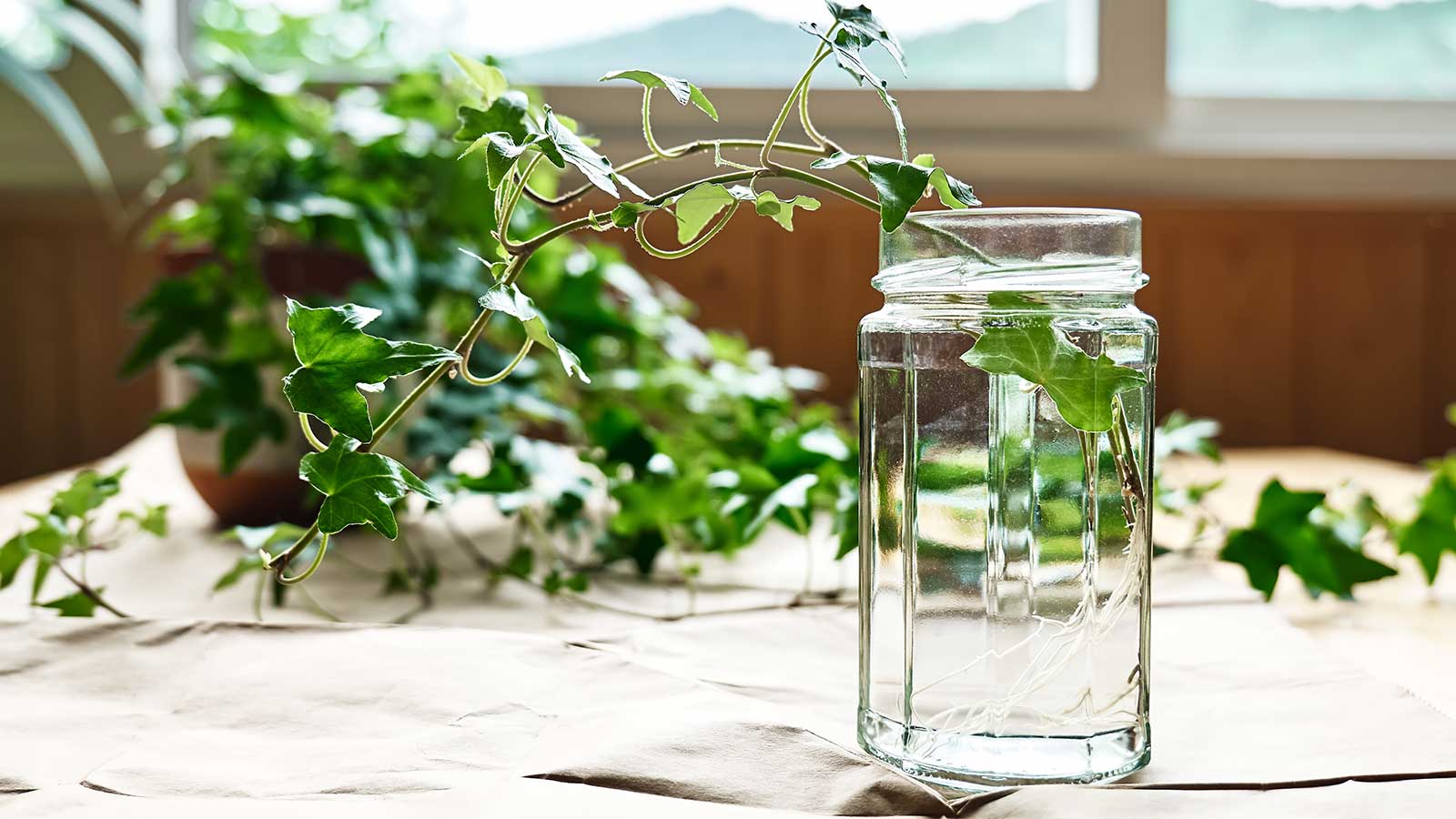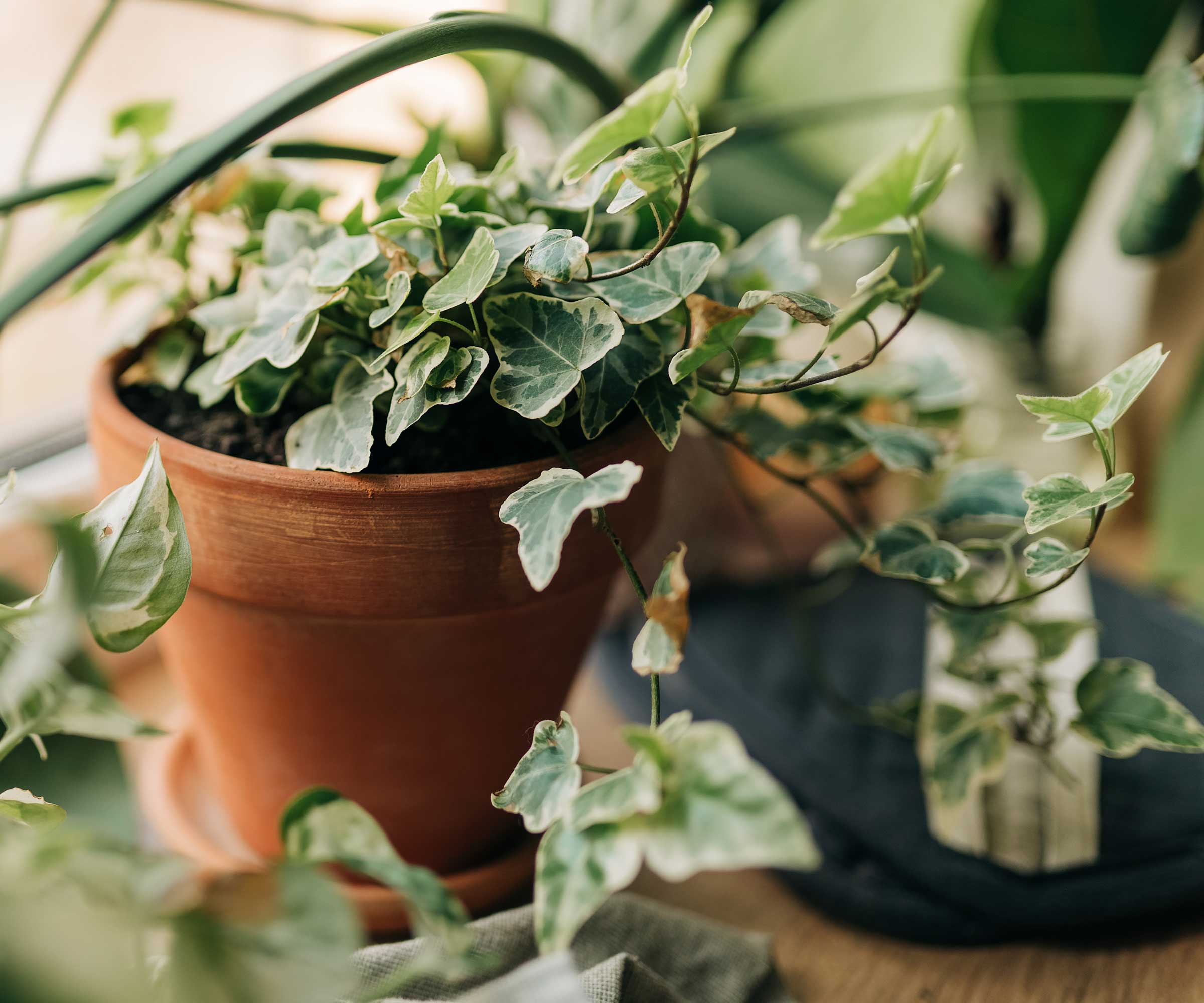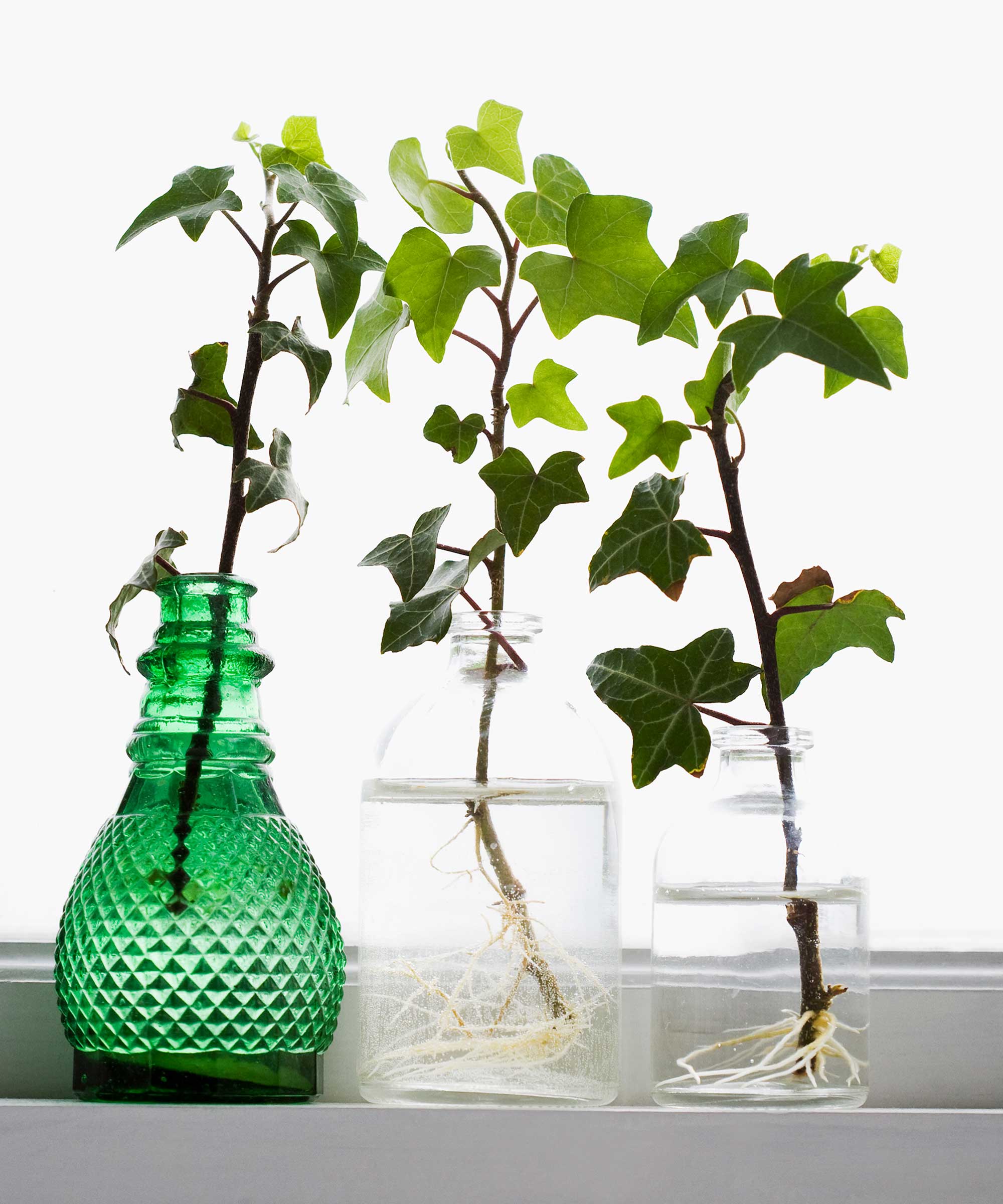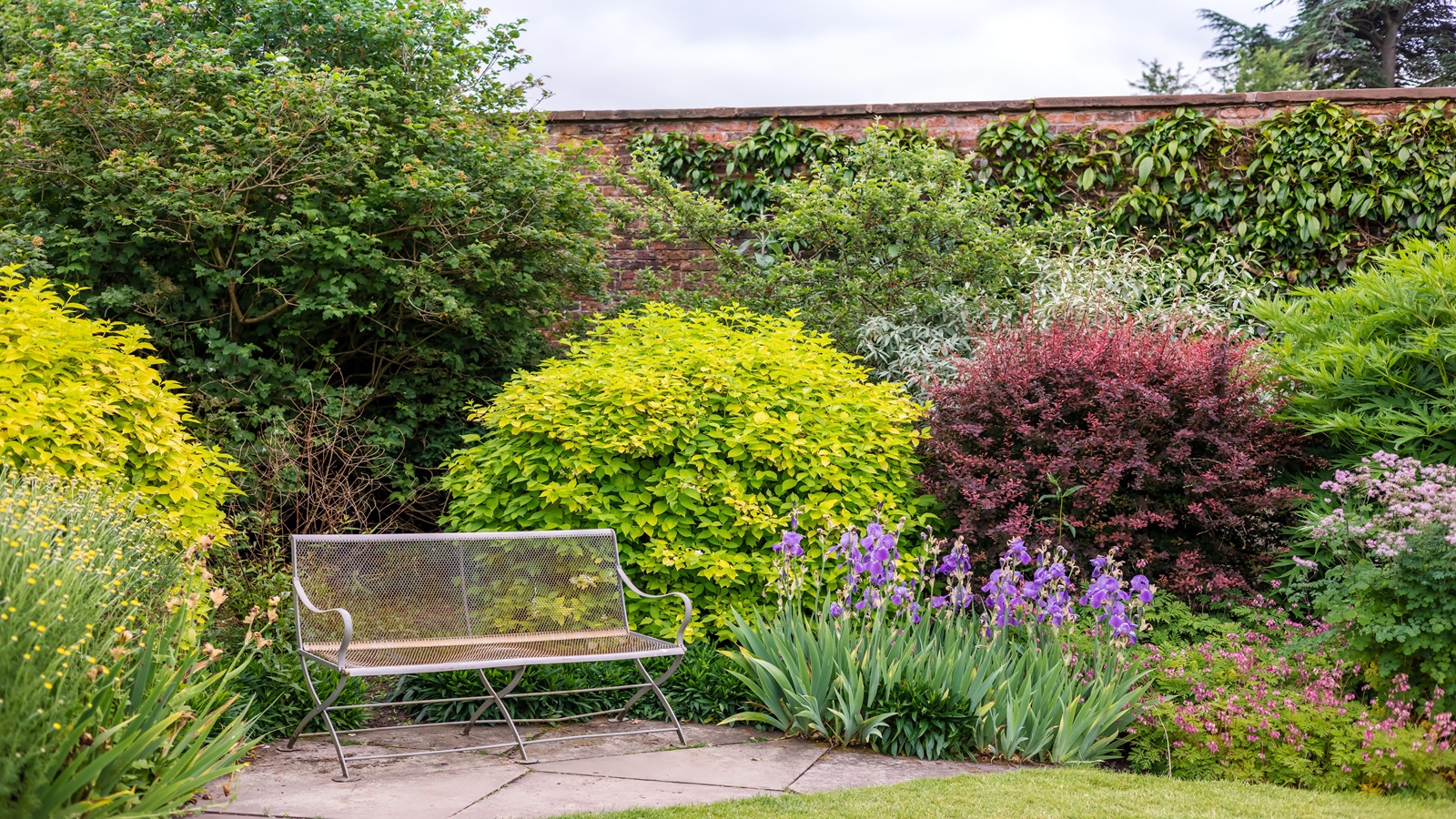How to propagate ivy in water – for more plants, both indoors and out
Ivy is easy to look after and well-suited for planting up high – and propagating it in water is simple, too


Ivies are adaptable plants that work just as well indoors as they do out. Compact varieties look good in interior schemes and are particularly effective trailing from a shelf or a mantelpiece. In backyards, more vigorous specimens are useful for quickly covering walls and trellises, plus, they're good for wildlife.
Not only are these plants super versatile, but they're also easy to propagate by taking cuttings. While these can be rooted in soil, they can also be started off in jars of clean water – similar to many plants such as monsteras and fiddle leaf figs. This is a well-favored approach as it allows you to watch the root system develop, which gives you a good indicator of when it's time to pot them up.
So, if you already have one ivy plant, why not have a go at making some more – for free? Just bear in mind that in some regions, this plant is considered invasive, so it's best to check before you put it in your yard.

Ivy is a versatile plant
Propagating ivy in water – in 5 easy steps
Tony O'Neill, a gardening expert, shares his step-by-step tips for propagating ivy in water.
Top tip: Before you get started, put on a pair of gardening gloves – these plants are known to irritate the skin.
- Choose a healthy ivy stem with at least four leaves, and cut just below a node (where the leaf joins the stem) using clean, sharp scissors, Tony says. Then, remove the bottom two or three leaves.
- 'Place the cutting in a clear glass filled with water, ensuring the nodes where you removed the leaves are submerged, but keeping the top leaves above the water,' he continues.
- 'Position the glass in a location with indirect sunlight. Too much direct sunlight can cause algae growth in the water.'
- 'Change the water every three or four days to provide fresh nutrients and prevent bacteria buildup.'
- 'You should soon see roots developing from the submerged nodes. Once the roots are a few inches long, your ivy is ready to be potted in soil.'

Tony O'Neill is an accomplished gardening expert, author, and educator. With a passion for simplifying gardening practices, he has inspired a wide audience through his popular YouTube channel and website SimplifyGardening.com. Tony's expertise empowers individuals to cultivate thriving gardens and connect with nature.

Roots will soon appear from the submerged nodes
FAQs
How long does it take for ivy cuttings to propagate in water?
Look after the cuttings properly, avoiding the common water propagation mistakes, and roots should appear within just a few weeks.
Once established, consider planting your ivy in a hanging basket, either to brighten a corner of a room or to add interest to a porch.
Alternatively, use your new ivy plants as part of a fall patio display: plant them around the edges of mixed containers where they'll spill over the edge. Try a variegated variety alongside pansies and colorful heucheras for a pretty combination.
Sign up to the Homes & Gardens newsletter
Design expertise in your inbox – from inspiring decorating ideas and beautiful celebrity homes to practical gardening advice and shopping round-ups.

Holly started writing about gardening five years ago, and she is a regular contributor to Homes & Gardens. She has also written many gardening features for Woman & Home and Real Homes, too. She has previous experience as a professional gardener, where she helped to plant and maintain private gardens. Holly has also looked after allotment plots over the years and loves to grow her own flowers and veggies from seed. In her spare time, she enjoys visiting local gardens, botanical drawing, and tending to her ever-growing collection of houseplants.
-
 Courtney Love's historic loft combines rock star luxury with raw New York bones – it's on the market for almost $9.5 million
Courtney Love's historic loft combines rock star luxury with raw New York bones – it's on the market for almost $9.5 millionThe singer's former SoHo home features exposed brick walls, original wooden columns, a gas fireplace, and high ceilings – take the tour
By Hannah Ziegler
-
 Triangular shaped garden ideas – landscape designers share 9 ingenious ways to redesign your corner plot
Triangular shaped garden ideas – landscape designers share 9 ingenious ways to redesign your corner plotExpert tips for planning, planting and finessing a triangular shaped plot, so you can savour the space year round
By Jill Morgan